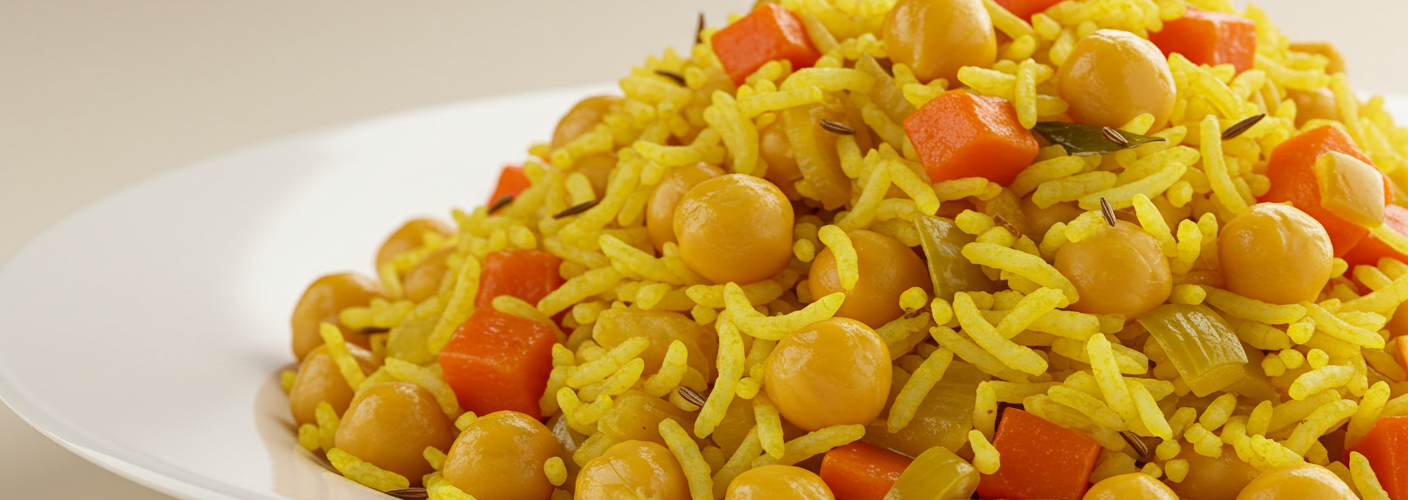Nohutlu Pilav, or chickpea pilaf, is a beloved dish in various culinary traditions, particularly in Middle Eastern and Mediterranean cuisines. This hearty and comforting dish features a perfect blend of rice, chickpeas, and a medley of spices that come together to create an unforgettable flavor experience. Ideal for both casual meals and special occasions, Nohutlu Pilav brings warmth and satisfaction to the dining table.
A Historical Perspective
The roots of Nohutlu Pilav can be traced back to Ottoman times, when it was common for households to prepare elaborate rice dishes. Pilafs were created to showcase the region’s rich array of grains, legumes, and spices. Chickpeas, a staple ingredient due to their nutritional value, were often incorporated into these meals, providing both texture and flavor. Over time, Nohutlu Pilav evolved, becoming a favorite not just for its taste but also for its versatility and nourishing qualities.
Ingredients That Make a Difference
At the heart of Nohutlu Pilav are its simple yet wholesome ingredients. The primary components include:
- Rice: Long-grain rice, such as basmati or Jasmine, is typically used for its ability to become fluffy and separate during cooking.
- Chickpeas: These legumes are the star of the dish. You can use canned chickpeas for convenience or soak and cook dried chickpeas for a more authentic experience.
- Onions: Sautéed onions add a depth of flavor and aroma, making the base of the pilaf irresistibly aromatic.
- Spices: Common spices include cumin, black pepper, and sometimes cinnamon, which elevate the dish with complexity and warmth.
- Broth: The dish is commonly cooked in chicken or vegetable broth, enhancing the flavor even further.
- Garnishes: Fresh parsley or cilantro can be sprinkled on top for a burst of freshness before serving.
Preparation Method
Making Nohutlu Pilav is a straightforward process that involves a few essential steps:
- Sauté the Aromatics: Start by heating some olive oil or butter in a large pot and sautéing chopped onions until they are fragrant and translucent.
- Add the Chickpeas: Incorporate cooked chickpeas into the pot, stirring them with the onions to create a harmonious blend of flavors.
- Introduce the Rice and Spices: Add the rice and spices, stirring to coat the grains thoroughly with the mixture.
- Add the Broth: Pour in the broth and bring the mixture to a boil. Once boiling, reduce the heat, cover the pot, and let it simmer until the rice is fully cooked and has absorbed all the liquid.
- Fluff and Serve: After cooking, let the pilaf rest for a few minutes. Use a fork to fluff up the rice, and garnish with fresh herbs before serving.
Serving Suggestions
Nohutlu Pilav is incredibly versatile and pairs well with various accompaniments. You can enjoy it alongside grilled meats, roasted vegetables, or a crisp salad for a refreshing contrast. For a vegetarian or vegan meal, serve it with a dollop of yogurt or a tahini sauce on the side.
In conclusion, Nohutlu Pilav is not just a meal; it’s an experience that evokes rich cultural history and traditions. Its delightful combination of flavors and textures makes it a wonderful addition to any dining table, whether you’re exploring new cuisines or simply indulging in comfort food. Embrace the joy of cooking and savor each bite of this delicious chickpea pilaf!




Add comment